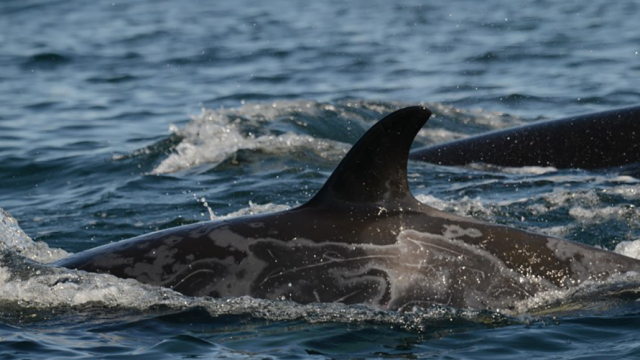Orcas in the Pacific Northwest are battling some kind of unknown skin disease, new research out this week suggests. The study found photographic evidence that these orcas have been developing more and more mysterious lesions over the years. It’s not clear yet how harmful this trend may be, but it’s the latest potential threat to the already endangered population in the area.
Orcas (Orcinus orca), also known as killer whales, are found throughout the world’s oceans. But these marine mammals form tightly bound communities that differ significantly from one another, with groups led by matriarchs that can live for decades. One such community is the Southern Residents, a population of exclusively fish-eating orcas in the Pacific Northwest. The Southern Residents are the smallest group in the area and are composed of three pods that spend most of their time in the waters of the Salish Sea off British Columbia in Canada, as well as Washington and Oregon in the U.S.
Since 1976, the Centre for Whale Research in Washington has been keeping track of the Southern Resident killer whales. Occasionally, scientists have noticed an odd lesion or skin mark on the orcas, which have sometimes lingered. But until now, no one’s tried to quantify the prevalence and incidence of these skin conditions in the population.
This new study, published Wednesday in PLOS-ONE, was led by researchers at the School of Veterinary Medicine at the University of California, Davis. They sifted through photos collected by the Centre for Whale Research from 2004 to 2016, which cover almost 20,000 individual whale sightings.
Based on the photos, the researchers identified six distinct types of lesions on the orcas, with the two most common types being grey patches or targets. About 99% of the whales developed one or both of these lesions at some point, and the total number of lesions found on the whales increased over the years across all three pods. The team ruled out possible factors for the lesions, such as changes in water temperature or salt content, leading them to theorise that some kind of germ is the likely culprit.
“Before we looked at the data, we had no idea that the prevalence of these skin lesions were increasing so dramatically,” said study author Joseph Gaydos, a veterinarian and science director of the SeaDoc Society, a program at UC Davis, in a statement from the university. “It’s worrisome. Now we need to try and isolate the potential infectious agent.”
The one bright note is that the researchers did not find a connection between the appearance of these lesions and an increased risk of dying in the orcas. But the lesions could still be harming the orcas, or they could be a sign of other problems, such as a weakening immune system. So more research will have to be done to understand the impact of these skin conditions on their health.
It hasn’t been a great time for the Southern Resident orcas in particular. They were declared endangered by the U.S. in 2005, but their numbers have continued to decline and there are now estimated to be fewer than 75 individuals still alive in the community. Human activities like pollution and the loud noise caused by boats are thought to be the largest factors in this decline.
